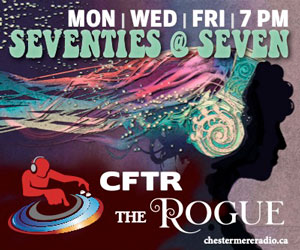Last weekend marked International Women’s Day, which I observed in years past by visiting a few of the dozen or so craft breweries in Calgary that were celebrating the occasion with their annual Pink Boots Society Collaboration Brew. Sadly, the ongoing pandemic still prevents large gatherings, so my celebration this year was from the warm and safe embrace of my windowless basement, where I have been practicing my hermit skills for a full year now.
For those not in the know, the Pink Boots Society is the industry association of women working in the brewing profession, and they gather every year at this time to release a collaborative brew prepared by the female staff of multiple breweries.
While we think of brewing and beer drinking as male-dominated pursuits, the art of making beer was handled almost exclusively by women until the dawn of the industrial revolution, when the loutish lads of the day decided to seize the reins of production for themselves.
Archaeologists believe the oldest evidence of a barley-based beer comes from ancient Mesopotamia around 5000 BCE, in the heart of the so-called fertile crescent, or the cradle of civilization that was the birthplace of written language, the wheel, agriculture, irrigation, and did I mention beer?
The Sumerian civilization was the first to invent word-based writing, which I can still recall from struggling through the dense and voluminous Epic of Gilgamesh as a college student. Unsurprisingly, one of the first things the Sumerians started writing about was beer, with the Hymn to Ninkasi being an ode to the goddess of brewing, and also the world’s first known beer recipe in written form.
Ten millennia ago, the population of the fertile crescent were still mostly a hunter-gatherer civilization, following the seasonal migrations of game animals and plant harvests. While the men were out hunting mastodons and wooly mammoths, the women would be left at home gathering ingredients for cooking and preparing food, which including the brewing of a primitive proto-beer from local grains.
Those clever ladies figured out that if they planted barley and other crops, their nomadic wanderings could come to an end, which propelled humanity out of its nomadic roots into the era of agriculture. Remember to thank your favourite lady for her gender changing the course of human civilization.
Babylon was the greatest city of ancient Mesopotamia, and the women who controlled the beer production were revered as high priestesses of the goddess Ninkasi, who magically turned rain-soaked grain vessels into intoxicating beer, thanks to the unknown influence of wild airborne yeasts spontaneously fermenting the malted barley.
Beer was seen as a gift from the gods, and the women controlling the brewing process enjoyed elite status in society, making alewives so highly sought by the upper crust of society, it was common for lady brewers to have a trophy husband or two.
Here in Alberta, women working in the brewing industry began much later than in Ancient Mesopotamia, with the first female brewer appearing in 1894, when what we now call Alberta was still part of the NWT. The Strathcona Brewery was located on the riverbanks near what is now the 105 Street bridge in Edmonton, and was an early example of gender equality, with the husband selling the beer while the wife brewed it.
Unfortunately, we still have a long way to go before gender parity is reached in the Canadian brewing industry, with the stereotypical bearded and flannel-clad hipster dudes still making up the majority of brewers and brewery owners.
The 2-year brewing program at Olds College is the favoured source for hiring professional brewmasters in our ever-expanding Alberta craft beer scene. The first 30-student intake was back in 2015, and was 100% male, but has been inching closer to gender parity every year.
My favourite brew for this year’s IWD is the Pink Boots Biére de Garde, brewed by the hardworking ladies at Village Brewing and Railyard Brewing, who collaborated to create this unique brew in the style of a French Farmhouse Ale. At 8% ABV, it does pack a wallop, so I only had one. Made from locally grown Alberta malting barley, with a unique blend of 5 different hop varietals, a clean lager-styled European yeast, and a dollop of Alberta honey to provide a silky mouthfeel and floral aroma. Look for it now at your friendly neighbourhood booze merchant, but only for a limited time.






